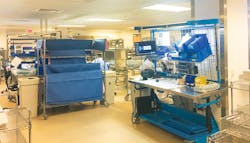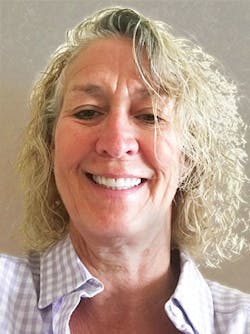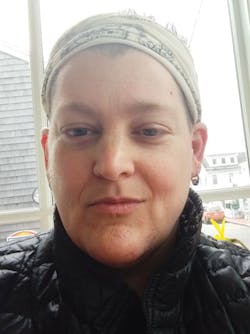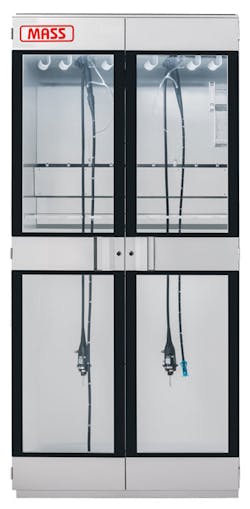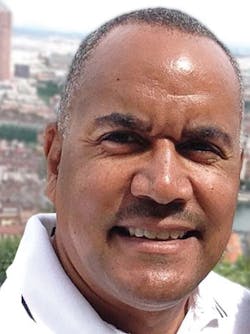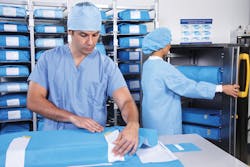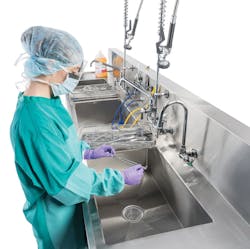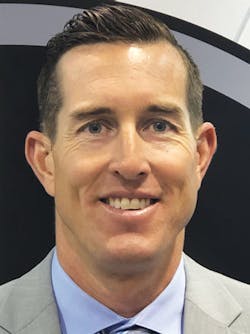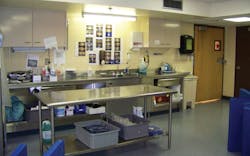Those health systems and hospitals that understand the vital role the central sterile/sterile processing department (CS/SPD) plays in patient care and safety are willing to make investments in this area, with some taking steps to remodel existing spaces and others having the resources to build completely new departments. In either case, a CS/SPD makeover is no simple task; it requires careful planning to ensure CS/SPD professionals can continue to serve the operating room (OR) and its patients during construction, and the foresight to design the new CS/SPD in a way that supports future growth.
Establish your vision and initiate planning
It is critical for a healthcare organization to understand its overall vision for growth, what service areas it is planning to add and the overall projected growth for each of these areas during the CS/SPD pre-planning stages, explains Mary K. Lane, MHA, CSPDM, CSPDS, CSPDT, MK Lane SPD Consulting. She states:
“Having this information at the onset typically lays a great foundation for the SPD leadership and design team to know what types of equipment are needed and how many of each type will be needed in order to handle the estimated volumes that senior leadership is proposing.”
- Total surgical procedure volume, specialty and sub-specialty volume
- Anticipated total case growth or decline of each specialty
- The existing life left for each processing unit, by modality
- Current and anticipated device and instrumentation needs for set forward time/date increments (e.g., 1, 3, 5, 10, 15 years)
- Global and segregated budget necessities and realities
- Labor needs in strategic increments
Lane adds that assembly of a multidisciplinary team of stakeholders (e.g., C-Suite, CS/SPD, OR, team) is critical to ensuring the new department meets everyone’s needs both now, and well into the future.
“Redesigning a new SPD is no small undertaking regardless of the size of the department due to all of the unknowns; and redesign is typically much more involved and time consuming when redesigning an older department,” she said. “When the time comes for your department redesign remember it is imperative to have a multi-disciplinary team from the C-Suite to SPD leadership as well as input from the SPD staff. Outside of the hospital you need a great design team that listens to your needs, great contractors that have a lot of experience in SPD construction and great equipment suppliers.”
Special considerations: Cannulated instruments
“For example, consider what your department would like to accomplish in the coming years and do some research to see if you can determine what may be coming in future guideline revisions,” said Benedict. “If your facility would like to eventually move towards a centralized endoscope reprocessing model where all endoscopes are processed in the same location, consider building the purchase of robust endoscope-specific transport trays and carts into your budget. Drying of endoscope channels is a hot topic right now and this may lead you to design your new space to accommodate drying cabinets so they can be placed in areas with adequate square footage and close to in-wall instrument air supplies.”
The Olympus ChanlDry drying cabinet provides a safe and controlled environment for endoscope storage. With active drying of both the endoscope instrument channel and air/water channel, the use of HEPA-filtered, dry air (via a facility’s own supply or through the purchase and use of a ChanlDry air compressor) maintains clean and dry conditions while helping to prevent re-contamination and inhibiting bacterial growth. Pressurized air is carefully controlled and the ChanlDry cabinet contains an automatic emergency shutoff in cases where the maximum air pressure is exceeded, preventing endoscope damage.
“Clinical research has highlighted the dangerous and unfortunate ‘hidden’ risks with cannulated devices — from surgical instruments to flexible endoscopes,” said John Whelan, Clinical Education Coordinator, Healthmark. “Historically, we assumed more than we should have when it came to manual and/or automated cleaning. We now know that brushing and washers do not always effectively contact and clean interior surfaces. The only way to really validate then is to actually ‘look inside’ these devices.”
“Current standards and best practice call for dedicated space and processes that incorporate lighted, magnified visual inspection, as well as process verification — both in decontam, as well as in assembly,” said Jahan Azizi, Special Projects Manager, Healthmark. “The very critical nature and responsibility in reusable device processing demands incorporating such measurable quality control into standard processes. No longer is the ‘naked eye’ considered enough to call it ‘good.’”
Lean learnings
“Since this endeavor will be a major investment in money and time, your first action is to introduce Lean principles by engaging all stakeholders (SPD, Peri-OP, surgeons, and senior leadership) to understand their pain points and prioritize them to incorporate them into a design plan that will achieve the biggest return on your investment and establish synergy between all who will be impacted. For example, if a key takeaway from your discussions is that surgeons are showing dissatisfaction with bioburden, defects and inefficiencies, then you may not spend most of your makeover funds on expanding storage areas.”
“Second is to review the analytics provided by an instrument tracking solution to identify the bottlenecks and wasted activities in the current state of your process workflow to better understand what designs should be made to create the ideal workflow that will achieve a more efficient and repeatable outcome,” Minnis adds.
Steven Sutton, Lean Six Sigma Green Belt, Director, Planning and Design Group for Belimed, suggests asking and answering the following questions during the planning stage:
- Why are you doing this? What area causes your process the most pain? What do you hope to improve: Additional space, equipment capacity, processes?
- How will you manage the construction: Temporary space, phased renovation, external solution?
- What changes are coming from the C-Suite that will impact your department or process? Are they adding clinics? Is the OR adding orthopedic surgeons? Is your specialty mix going to change, doctors moving around, etc.?
“If you don’t begin with the end in mind then you and your hospital system will spend a lot of time and money with a negative result,” said Sutton. “You need design partners that can help you articulate how much space you need.”
Belimed’s MST-H 9618 HS2 is FDA-cleared to reprocess up to 600lbs of medical instruments (24-tray capacity at 25lbs/tray). The TS16 automation allows for unloading to being as soon as the cycle is complete, eliminating the needs for SPD employees wait for trays to cool before removing batch racks from the sterilizer chamber. The TS16 also has ergonomic and safety benefit by facilitating the unloading of heavy batch carts from the sterilizer.
Stick to the standards
When in the planning stages, stick to the standards, says Joseph Hannibal, Marketing Director, Sterilization, Surgical and Infection Prevention, Halyard. This includes Association for the Advancement of Medical Instrumentation (AAMI) and Association of periOperative Registered Nurses (AORN) guidelines for sterile processing.
The HALYARD and BELINTRA SMART-FOLD STERISYSTEM is a unique sterilization packaging, transport and storage solution, designed to reduce the risk of tears, cuts and holes in wrapped instrument trays. Comprised of SMART-FOLD High Performance Sterilization Wrap and stainless-steel instrument baskets, shelves and transport carts, the technologies utilize a two-touch system to help safeguard the sterility of instruments after sterilization, through storage and transport, until use in the OR.
Standardize processes
“Key factors in successful SPD makeovers address process variations in instrument care and improve workflow,” said Dan Smigel, Project Design Manager, STERIS. “While the major steps of instrument processing steps remain relatively unchanged, instrument manufacturers often create varying instructions for use (IFU) that create variations in the basic process. These variations can interrupt standard work by introducing additional minutes of manual cleaning, or additional rinsing or sonic cleaning times.”
The STERIS AMSCO 70 Series Reprocessing Sink represents the ideal workstation meeting ergonomic requirements of a diverse workforce, while providing features such as built in sonic cleaning and chemistry options. The sink features help the CS/SPD maintain compliance both through process and audit, with technologies that can make meeting the current ANSI/AAMI standards seamless.
The wonders of workflow
In a CS/SPD makeover, how you structure the space and where you position the department and its equipment can have a major impact on process workflows and efficiency.
“In a high-volume academic medical center or an ambulatory surgical center, the location of the SPD plays a critical role in effective turnover, management and delivery of surgical instruments,” said Hannibal. “If space allows, locating the SPD on the same floor as the OR is ideal. Wherever the location of your SPD, though, creating a workflow that is as linear as possible is critical. A thoughtful workflow will move soiled instruments from decontamination to their place in the next surgical kit in a streamlined fashion, ensuring effective use of the space and preventing SPD staff from entering sterile spaces unnecessarily.”
“Workflow is the most important factor when it comes to a makeover. One factor that impedes workflow is the fact that there’s too much inventory in the room and not enough floor space. Think traffic jam! Who wants to work in a traffic jam all day long? Is employee morale, employee safety and patient safety important to a hospital’s leadership team? If so, implement a storage system that enhances the workflow, declutters the working space, reduces the constant rush hour traffic jam and is ergonomically designed to help the staff handle heavy instrument sets.”
DSI has a specialized storage system specifically engineered for storing instrument sets in rigid containers, peel packs and blue wraps. The company’s Modu-Max CTS allows CS/SPD to maximize the valuable yet very limited space within the department by eliminating the wasted air space (cubic and square feet), compared to conventional open wire shelving which is designed for bulk items. The system offers enhanced labeling features, dust covers for compliance and is ergonomically designed with pullout drawers for storing heavy instrument sets. The DSI storage system helps the hospital drive down costs (e.g., not reprocessing sets from blue wrap tears), reduce work flow bottle necks, increase employee and patient safety, and achieve industry standard compliance.
Benchmark and measure
Analytics and key performance indicators (KPI) should be the big drivers to enhance the downstream growth and health of a department,” said Christian Abell, Manager, SAM Operations, Aesculap. “Facilities must consider the impacts of block scheduling, complexity of surgical disciplines, staffing plans and the daily SPD impacts for productivity versus process flow. Therefore, both areas should be evaluated to understand the cumulative effect and how that may influence bottlenecks at specific times of the day and its relationship to departmental throughput capacity. Without this level of transparency, moving walls and purchasing new machinery will be to little or no avail.”
Timing is critical
When a healthcare facility is renovating or rebuilding a new OR suite and CS/SPD simultaneously, how does it maintain current day-to-day operations while preparing staff for the transition to a new department with new equipment and processes?
Geisinger Community Medical Center Opens New CS/SPD
Geisinger Community Medical Center (CMC) embarked on a massive expansion in 2014, which included a new 14-room OR suite and a new CS/SPD to support increased procedural volumes. Rather than trying to open both the new OR and CS/SPD at the same time, the medical center took a phased approach where they opened the CS/SPD in July 2015, three months ahead of the new OR opening date planned for September 2015. During that transition time, the CS/SPD team trained in the new space with the new equipment and processes, while relying on its old department to serve the existing ORs.
“Having three months in our new department before the new OR suite opened saved us a ton of headaches,” said Manny Rodriguez, Sterile Processing Manager, Geisinger CMC. “If we had opened up the new CS/SPD and ORs at the same time we wouldn’t have made it because there would have been too many moving parts. The phased approach gave us time to become familiar with all of the new equipment — we had new sterilizers, washers — everything — before the OR switched over to its new space.”
Rodriguez explains how CS/SPD leadership prepared their staff members for the transition by circulating them through phases of training in the new department while keeping operations up and running in the old department. He notes how the manufacturers of the equipment in the new CS/SPD played an important role, with each manufacturer sending sales reps on-site to instruct staff members on correct use of the new equipment, with most providing week-long training sessions to the team.
Not only has the new department improved the effectiveness, efficiency and quality of Geisinger CMC’s sterile processing operations, it has also had a positive impact on employee morale. According to Toni Amorine, Sterile Processing Supervisor, Geisinger CMC, the aesthetic and ergonomic improvements in the facility’s new CS/SPD, from bright paint and lighting to height adjustable work tables, have provided a needed boost, stating:
“Whereas our old department had dark green tile everywhere our new CS/SPD has off-white walls and everything is clean and bright. The appearance of the department and the more comfortable workspaces has made a world of difference for staff morale. We’ve had people from different hospitals across the U.S. come to our new department for ideas on designing their own, as well as Joint Commission surveyors.”
Maximize equipment investments
One of the greatest impacts on a CS/SPD renovation or rebuild is the installation of new equipment, which has the potential to significantly improve process efficiency, and the quality and safety of the instruments delivered to the surgical team. When allocating the time, resources and dollars to a CS/SPD makeover that features new equipment, those involved should take the time to ensure they are maximizing their investments.
“Once a final firm is selected based on their design it is now time to think about which equipment manufacturer is going to be the best fit for the design, as well as the most user friendly for staff and has the least amount of down time,” said Lane. “This portion of the redesign process is the longest portion outside of the actual department construction. Do yourself a favor and don’t take short cuts on evaluating equipment for your redesigned department. Reach out to other hospitals and ask their opinions on the equipment and the level of support they receive from the manufacturers. Also go on site visits and see the equipment in action. Once you’ve completed this phase of the process, you’re well on your way.”
UNC Medical Center’s sterile processing improvement project
UNC Medical Center (also known as UNC Hospitals) in Chapel Hill, N.C., looked to STERIS IMS to provide direction and serve as a collaborative partner with its CS/SPD and peroperative teams when transforming the physical space, processes and staffing model of its CS/SPD. Together they embarked on a sterile processing improvement project that included leadership development, equipment investments and asset maximization, staff education and training, scheduling and process improvements, and relationship building between the sterile processing and perioperative teams.
“The beauty of the STERIS IMS relationship is they performed an assessment and came back with a plan for how to attack the issues because there were so many,” said Jayne Byrd, VP, Perioperative Services for UNC Hospitals. “More than anything else, the STERIS IMS team brought to the table an expert manufacturing mindset and acumen that revolutionized our processes. In automotive manufacturing you don’t skip steps or the wheels fly off the car. It’s no different in sterile processing and its impact on the OR.”
During the assessment of UNC Hospitals’ CS/SPD, the STERIS IMS team determined that the department was both underequipped and not using its existing equipment to the best of its performance capabilities. Working collaboratively with the CS/SPD team, STERIS IMS implemented improvements in the following areas.
- Decontamination: UNC Hospitals’ CS/SPD had insufficient sink capacity - there was simply not enough sink lines to enable decontamination staff to hand wash instruments prior to mechanical washing in accordance with instrument manufacturers’ instructions for use (IFU). To address this issue, UNC Hospitals renovated its decontamination areas, increasing prep sinks capacity from one multi sink to three multi sink set ups so that sterile processing staff could properly decontaminate instruments per manufacturer requirements. As a result, the department improved decontamination throughput capacity by 100 percent.
- Cleaning: UNC Hospitals was using only 50 percent of its washer capacity, with an output equivalent to 25 trays per hour, and was processing only 10 percent of instruments through a sonic cycle. To address this issue, the STERIS IMS team worked with the sterile processing team to put into place processes that maximize washer capacity. This included using the multi-chamber instrument washer solely for instruments to take full advantage of the sonic processing capability/capacity, and using the single chamber washers for instruments only at peak times. As a result, the department increased washer tray throughput by 100 percent (from 25 trays per hour to 50 trays per hour) and all instruments that require sonic processing are now processed in that way.
- Sterilization: To improve tray throughput, UNC Hospitals installed two new low temperature steam sterilizers to replace the four outdated sterilizers they had in place, and added new racks and carts. They also replaced 800 old instrument containers, with diminished integrity because of age and overuse/poor maintenance, with new containers. In doing so they increased the capacity of the sterilizers and storage locations by approximately 25 percent. Another process and quality improvement in sterilization was the switch from three-hour biological indicators (BI) to ones that can be read in just one hour, and the loading of all BI testing and results data into the department’s instrument tracking system.
Post-Makeover Procedures
Once the CS/SPD redesign or rebuild is completed, and the new equipment and processes are up and running, the work doesn’t stop there, according to DeMeo. She encourages CS/SPD teams to conduct the following post-makeover procedures to foster continuous improvement:
- Continue to solicit stakeholder feedback and adjust accordingly
- Monitor all quality control indicators
- Continue competency checks with staff associates
- Continue to monitor volume, labor, budget, quality, competency, process flow and overall efficiency, productivity and successful output, and adjust as needed
“Continued success is not dependent on past performance, but real time event actionable objectives and results,” said DeMeo. ”Remaining good or average is not a level of performance we should be seeking. Excellence in all we do and sustaining it is the mark of an excellent department and likely happy one!”
About the Author
Kara Nadeau
Senior Contributing Editor
Kara Nadeau is Sterile Processing Editor for Healthcare Purchasing News.
